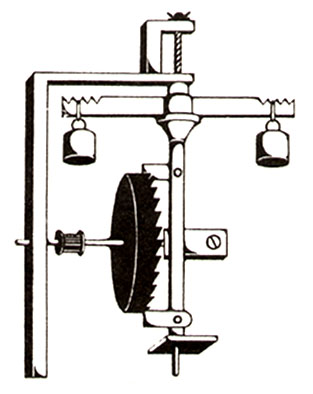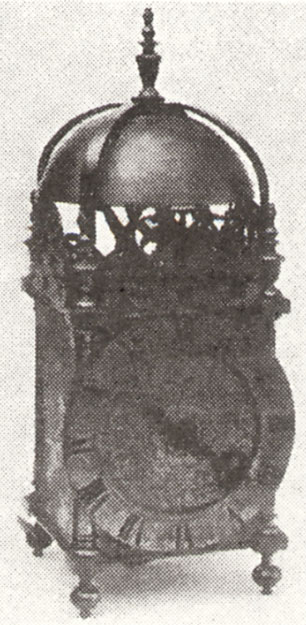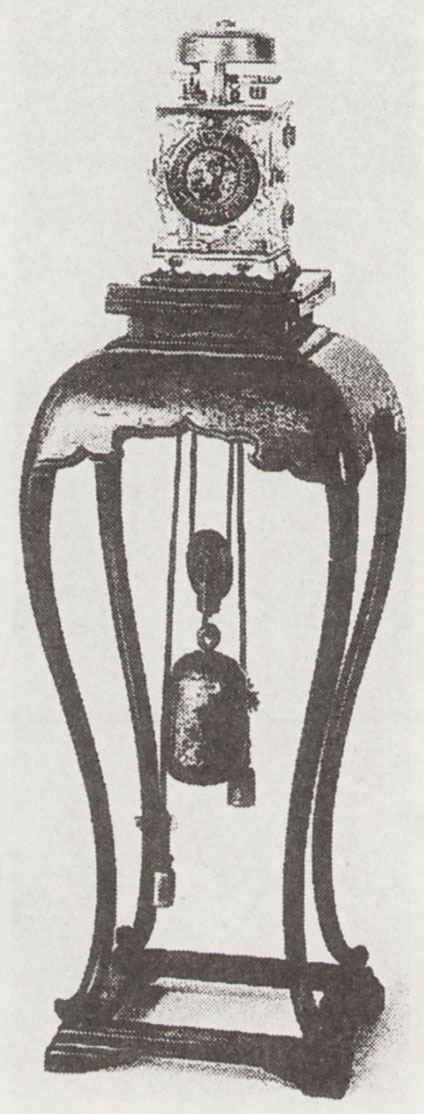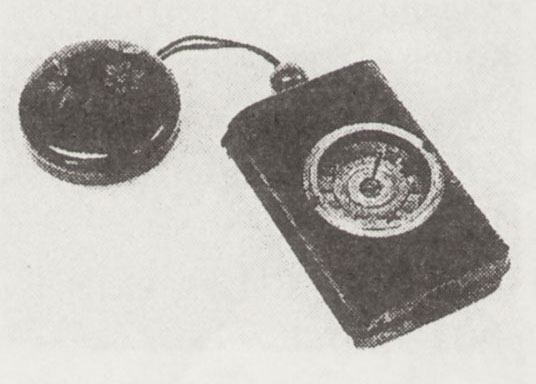The history of clocks technology transfer in Japan
Yasuyuki SHIRAI
In the propagation of the Christianity, mechanical clock was brought for the first time as the tribute in Japan. This fact seems to be a start of the mechanical clock of Japan in the history. In the first time, by imitating the clock, which had come from Europe, it was made. In the Edo period's national isolation policy, clocks made in Japan changed from replica of the Western style clock to peculiar the Japanese clock. They are that it not uses the time keeping of the Western method (Equinoctial Hour) and adopted the time keeping of Japanese method (Temporal Hour). Modern technology was mainly introduced from opening diplomatic relations of Days of the Tokugawa shogunate over the beginning in the Meiji era. Japan reformed calendar in the solar calendar, and the Equinoctial Hour was adopted. By the increase in the import of the clock from European and American countries, the Japanese clock became rapidly obsolete. Then, the manufacturing technology of the clock which began in the copy of the Western clock in the Meiji era initial stage fixed to Japan by ingenuity and contrivance. In this paper, the progress of the clock production in Japan is described.
Key Word: Clock, Japanese Clock, Western Clock, Equinoctial Hour, Temporal
Hour
|
1. Clocks and introduction of technology
It tries to historically observe initial clock technology in Japan. Society of Jesus was putting the bases of missions in Goa and Malacca. It seemed to require the clock in order to know the time of the ritual in the church. Clock craftmen for clock making and repair were trained in the base(1).Then, Jesuit went from the base to each place of Asia, and the mission was performed. Francisco Xavier of Jesuit visited Japan for the mission (1549). By bringing the mechanical clock for the mission from Goa, Xavier did the presentation article (1551)(2). This is the beginning in which the mechanical clock has entered Japan. In this other, presentation records are some observed European clocks. Afterwards, believers of the Christianity were gradually increasing. Society of Jesus opened COLLEGIO of the priest training organization and SEMINARIO of the educational institution (1580). The training of the occupation has also been made in this SEMINARIO. For the 30 years until the school closes, technology of Europe were transferred through their teaching in Japan. In 1600 ages, it is said that the Japanese student carried out production and repair of clocks. Then, clocks technologies were transmitted in blacksmith and goldsmith, and then clock craftsmen took loot in Japan. The oldest clock which exists in Japan is a clock which the Edo shogunate government primary general "IEYASU" did the presentation (1611).
2. Clock technology
It began to made mechanical clocks since the about 14th c. beginning. Large tower clock was manufactured first. Since around end in 14th c., it seemed to made small clocks for the indoor. Fig.1 is a figure of the Verge scapement with foliot, which is initial speed governor(3).

Fig.1 Verge escapement with foliot.
Indoor clock in the age is a mechanism equal to the tower clock, and it is made in the iron, and it has been composed of the mechanism of weight drive and verge escapement with foliot. In the beginning in 16th c., a small clock, which used the force of spiral spring as a driving force, would be made. The material has changed to the brass in which the processing is easy from the iron. Invention of the pendulum clock and improvement on the escapement advanced from the 17 centuries latter half in the eighteenth century first half. Then, the following have been produced: Various clocks and watches. Fig.2 is initial stage Lantern clock in England(4). Fig.3 is the clock which general IEYASU did the presentation(5).

Fig.2 Lantern Clock. |

Fig.3 IEYASU's Clock. |
3. Type of Japanese clocks
Though clocks began in the imitation in the initial stage, they were devised in order to suit culture and life of Japan, and they changed to the peculiar clock. Clock craftsmen of Japan did not make the clock for the purpose of the accuracy improvement. Originally, the time keeping of the clock was the fixed time method, however, clock craftsmen made the clock of indeterminate method of the time-keeping system of Japan. Especially, the Edo shogunate government between the national isolation controlled foreign trade. The clock would be made in Japan, and the import of the clock was very little to Days of the Tokugawa shogunate. There were privilege clock craftsmen who are employed to general and feudal lord, and there were some the individual clock craftsman. These clock craftsmen made Japanese clocks. Manufacturing of the clock did not use the metalworking machinery, and it was carried out by tool and instrument for handicraft like. The clock was expensive in Edo period, and then, the general citizen could not have it. And, the general citizen did not need the accurate time in social life. Because, general citizen knew the time in sound of time bell of the bell-tower installed in town and sound of temple bell in each place. In the form of European clocks, clocks could not be brought in Japan, since the Japan peculiar clocks were made.
The method of the time keeping of Japan is simply described. The complete day was divided into two parts, from sunrise to sunset, from dusk to dawn. Each part was given 6 "Japanese hours". This meant parts 6 Japanese hours to the daytime section and parts 6 Japanese hours to the night section. But as both day and night by their very nature vary in length with the seasons, it follows that one hour in one part could seldom be of the same duration as an hour in the other. The clock made in Japan first made the lantern clock of Europe to be a model. Clocks that became a model were taken from Dutch or Portuguese traders. Japanese craftsmen then grafted their own way of time reckoning onto European mechanical clocks.
Initial clock had the variable regulator of verge escapement with foliot. This was moved by the weight drive. In after, Japanese clock had two variable regulators, one for night, one for day, which automatically switched from one to the other at sunrise and at sunset. In after year, Japanese clocks also made spiral spring drive and pendulum clock.
The types of Japanese clocks are shown by photograph(6). A weight-driven Japanese clock had different 4 types. A wall clock (Kake Tokei)and a pyramid clock (Yagura Tokei) and a table clock (Dai Tokei), somewhat similar in size and structure to European lantern clock, were made early 17th c.. Fig.4 is a photograph of a wall clock with dangling weights. Fig.5 shows a pyramid clock. Mechanism part of clock has been mounted on the Japanese lacquered truncated pyramid. In the truncated pyramid, the weights could hang unseen. Fig.6 shows a table clock. This type placed on a table with four legs. A pillar clock(Syaku Tokei) of 4th was invented.

Fig.4 Kake Tokei. |

Fig.5 Yagura Tokei. |

Fig.6 Dai Tokei. |
Fig.7 is a pillar clock. This clock was the cheapest of Japanese clocks, but unique and unlike any other clock. A hand fixed to the weight as it descended showed the time on a rod marked adjustable hours.
In Europe, a spiral spring style clock was 17th c. end on spreading generally. That spiral spring clocks appeared in Japan was from 18th c. end over 19th c. beginning. Fig.8 is an alarm clock (Makura Tokei: Pillow Clock). The deluxe decoration is conducted the pillow clock, and it is a clock noticed by viewing from arts and crafts. This clock is regarded as being the imitation of the travel clock of Switzerland. Fig.9 is a seal case clock (Inrou Tokei). This clock is Japan edition of the pocket watch. A movement of clock was mainly imported from London.

Fig.7 Shaku Tokei. |

Fig.8 Makura Tokei.
|

Fig.9 Inrou Tokei. |
4. Dawn stages to clock industries
In Days of the Tokugawa shogunate stage, a demand in the start of diplomatic relations continued from foreign countries, and the national isolation policy became an end. The friendship commercial treaty was concluded between 5 nations of U.S.A., Netherlands, United Kingdom, France, and Russia in 1858. Then, the trading house of the foreigner of the export and import industry was constructed one after another in Yokohama, Nagasaki, Kobe. The free trade would be started, and the Western style clock would be imported from European and American countries.
The Meiji restoration government was established in 1868. Meiji Gov. promoted the policy, which attempted the economy independence for the capitalism society. Initial policy was the approach that it imitated all machines and instruments in the West and produces these in Japan. In the introduction of the modern technology, the largest defect was that machining technologies were low level(7). The foreigner engineer was employed in order to carry out the rapid technology transfer, and software and hardware of the machine were imported. However, the clock production had to be promoted privately, because it was not a national policy(8).
Meiji Gov. revised the calendar in 1872. The lunar calendar was abolished, and the solar calendar (Gregorian calendar) with the common world was adopted. And, Japanese adopted the Western method of the time keeping in 1873. As the result, production of the Japanese clocks became a stop, and import of the Western clock increased rapidly. Clocks mainly imported from European and American countries were wall clock, table clock and watch. Fig.10 is amount of import of watch and clock of the Meiji era (1868~1911).

Fig.10 Amount of import of watches and clocks.
The quantities of clocks are sum total wall clocks and table clocks. Especially import of wall clocks increased rapidly in 1873's, which adopted the Equinoctial Hour. Establishment of the clock industry and rearing of the clock engineer were required even in Japan, because the clock spread generally, and because the import increased. Japanese clock craftsmen began to make the Western clocks in handicraft initial stage Meiji era. However, factory production method has been established by mass-production technology and machine tool of western clocks in Europe and America. Establishment of the mass-production system was necessary in order to oppose in the import. It was general that it made the machine tool of clocks factory for oneself and does not sell it to other company, and the import of the machine tool maximized difficulty. However, purchased machine was improved, and the production system was possible, and it would be able to be opposed by the low-cost product in the import. The production of wall clocks begins in Japan was after 1880. The export began in the wall clock 1897.
5. Conclusion
(1) The peculiar Japanese clock has been made from the 16 century half by the nineteenth century first half. The peculiar time system was in Japan, and there was no necessity on the Western style clock.
(2) It became Restoration, and rapid technological introduction were necessary as a national policy.
(3) Though it began in the imitation in the beginning, by rearing of the engineer and storage of the technology, characteristics of Japanese as an original technology supported the technology.
Reference
- Yazawa. et al., The China Christianity Propagation History 1, Great Navigation Times Series II, Iwanami Syoten, Tokyo, (1982), p185.
- Kouno. Translation, All St. Francisco Xavier letters Toyo Bunko 581, Heibon-sya, Tokyo, (1994), p20.
- Libuse Uresova, European Clocks, Peerage Books, (1972), p28.
- Simon Fleet, Clocks, Octopus Books, London, (1972), p20.
- Sawada, Japanese Clock, Tankousya, Kyoto, (1996), p19
- Oda, Japanese clock illustrated book, Seiko clock museum, Tokyo, (1994)
- The Japan science history publication association before Meiji edition, The Japan machine technology history before Meiji. Japan Soc. for the Promotion of Sci..(1973)
- Uchida, Development of clock industry, Seiko clock museum, Tokyo, (1985)
|





